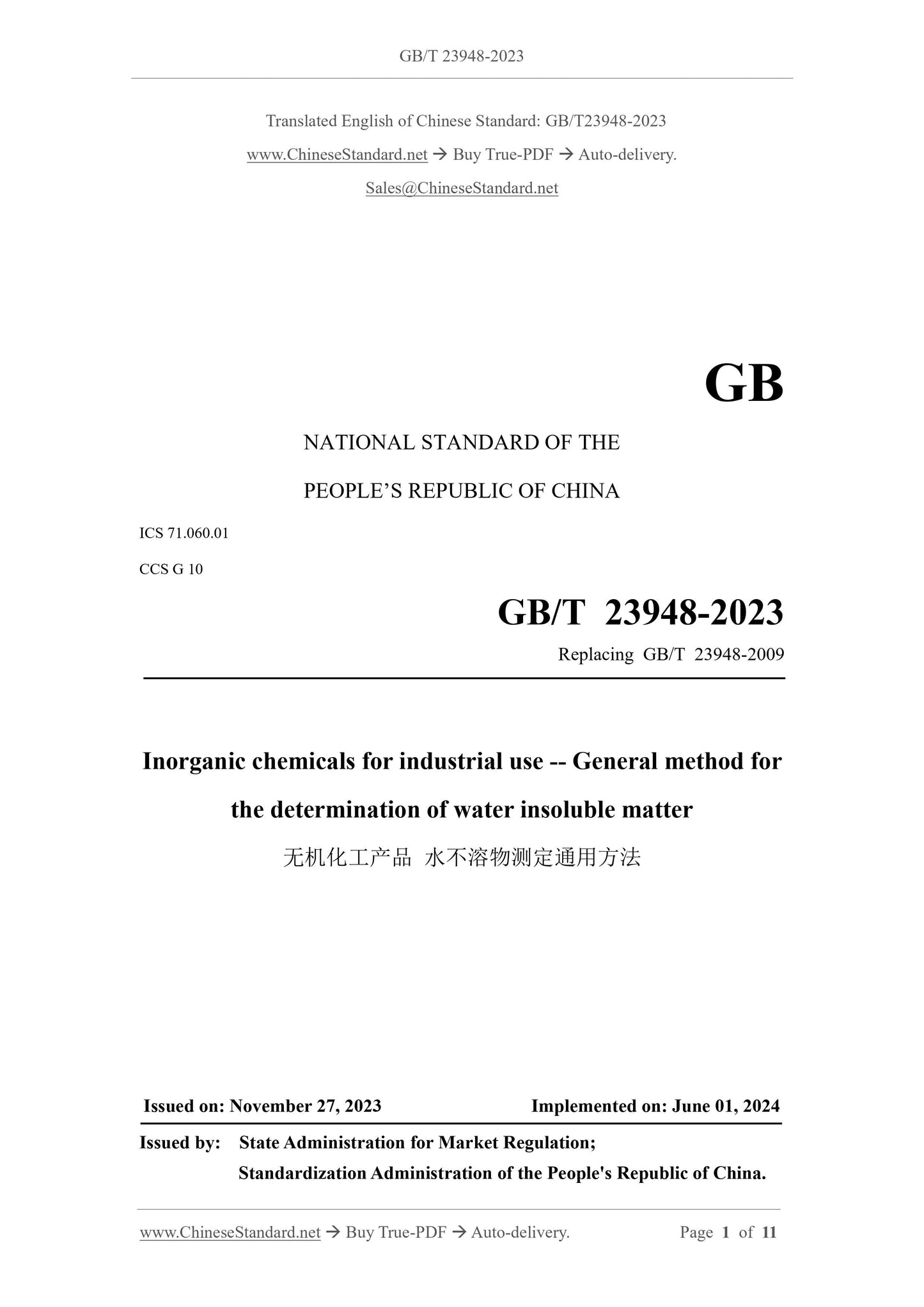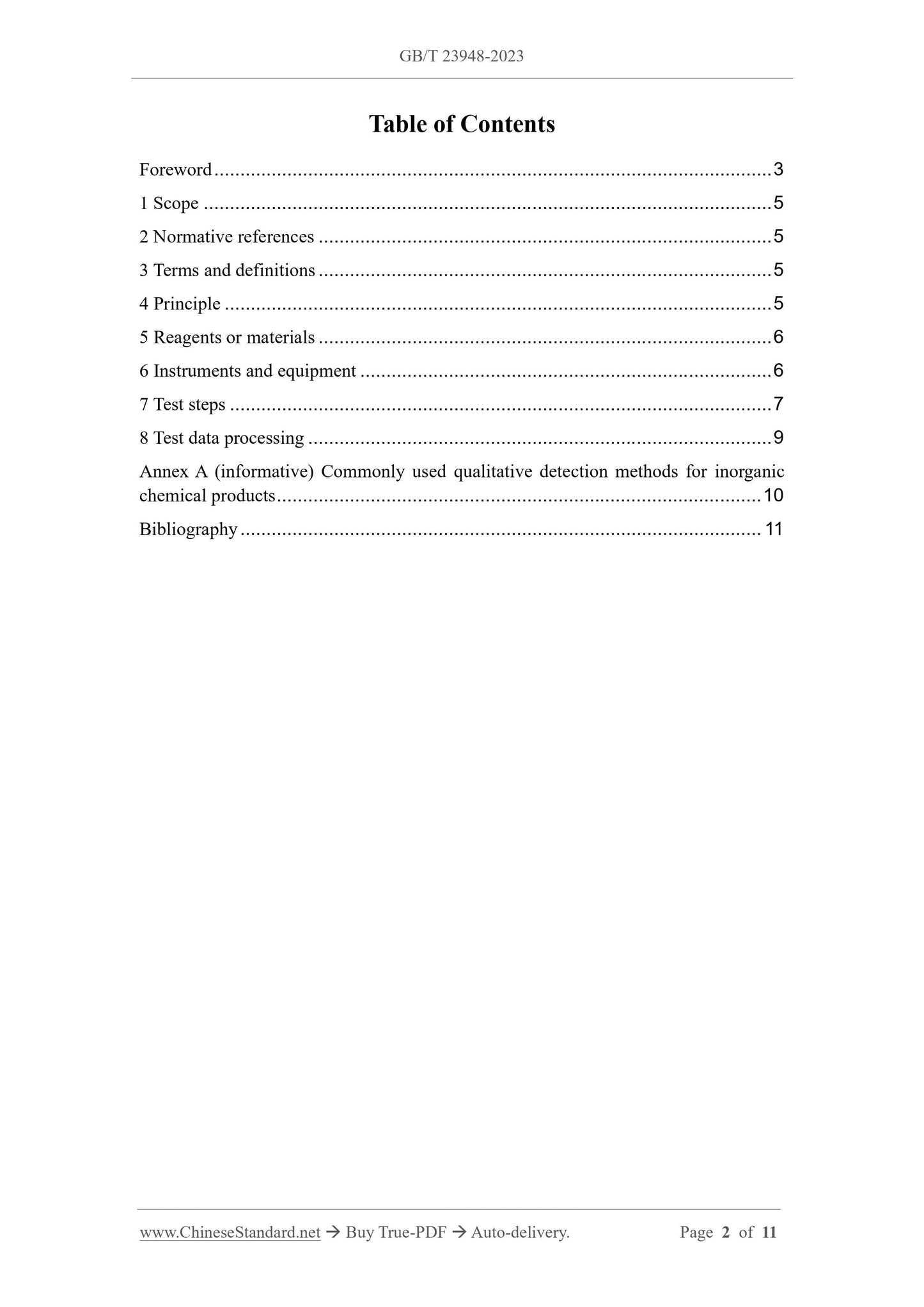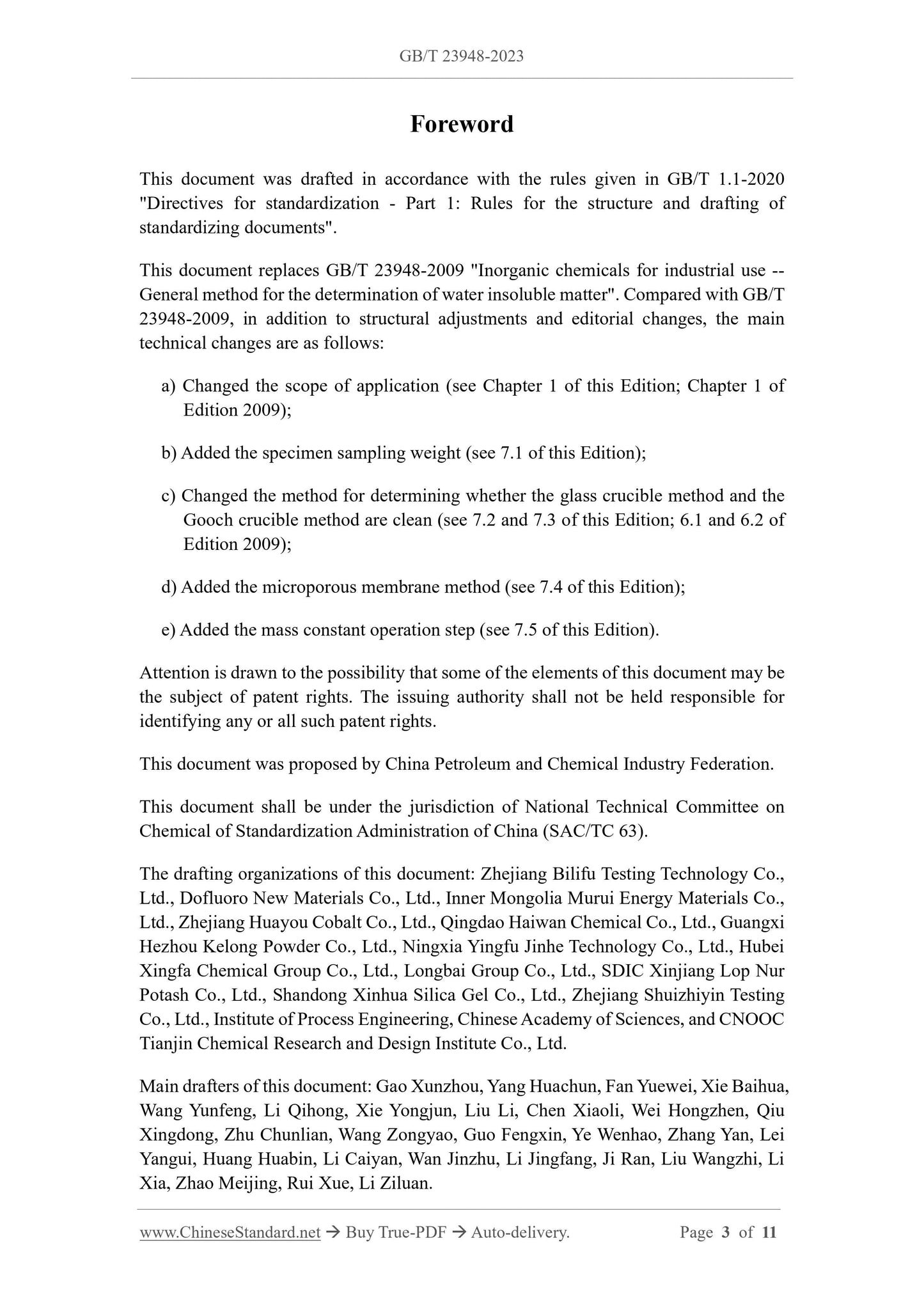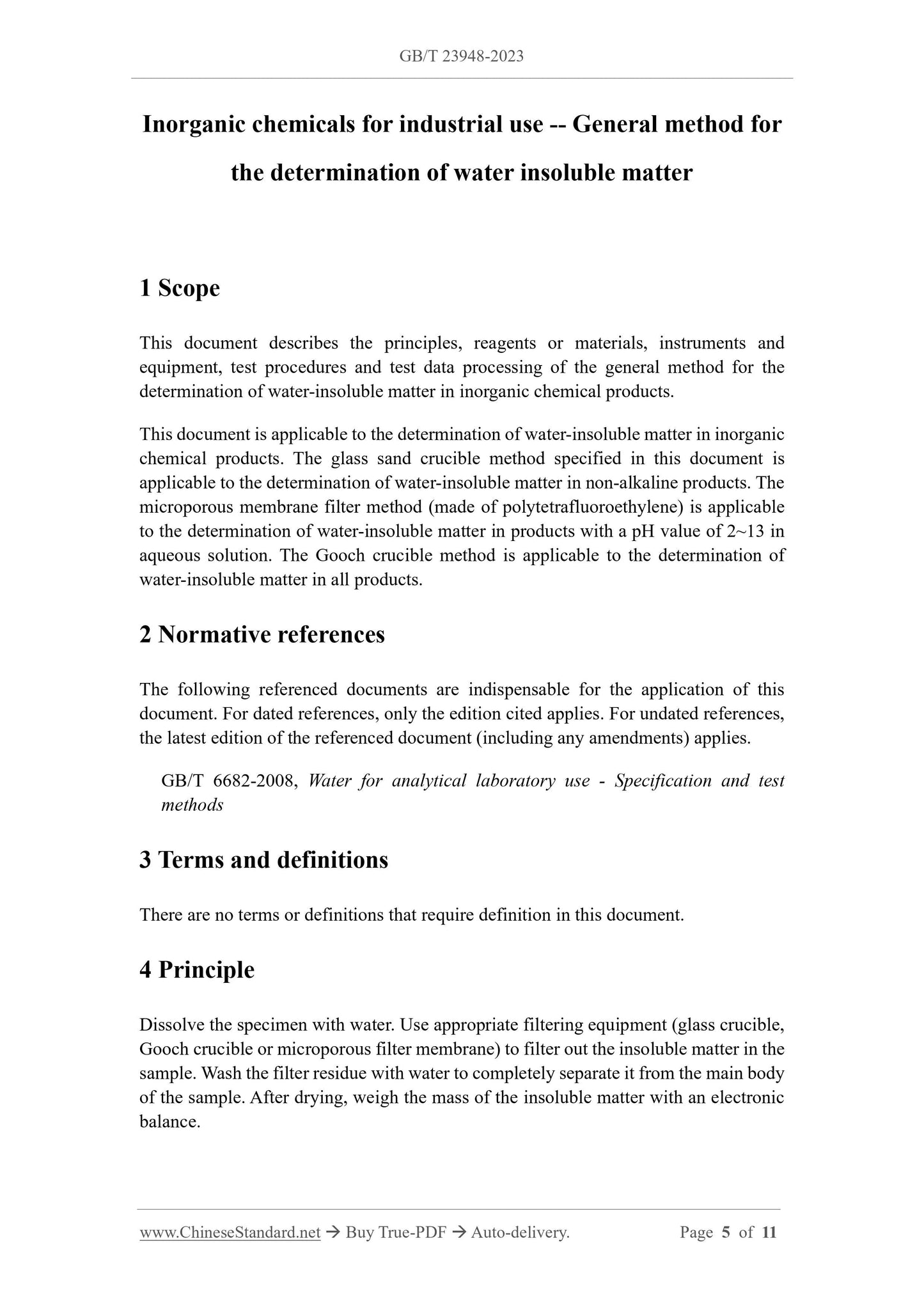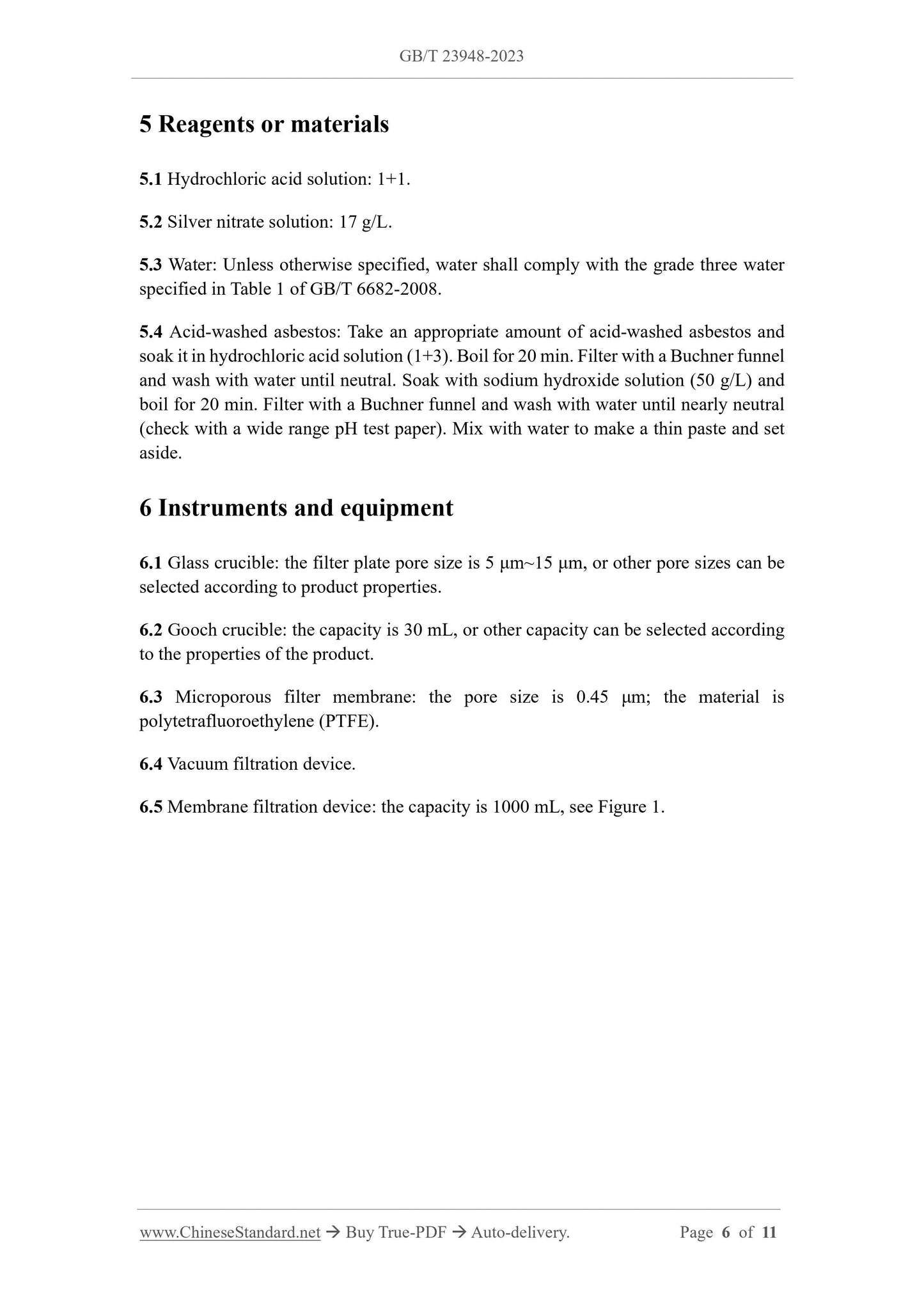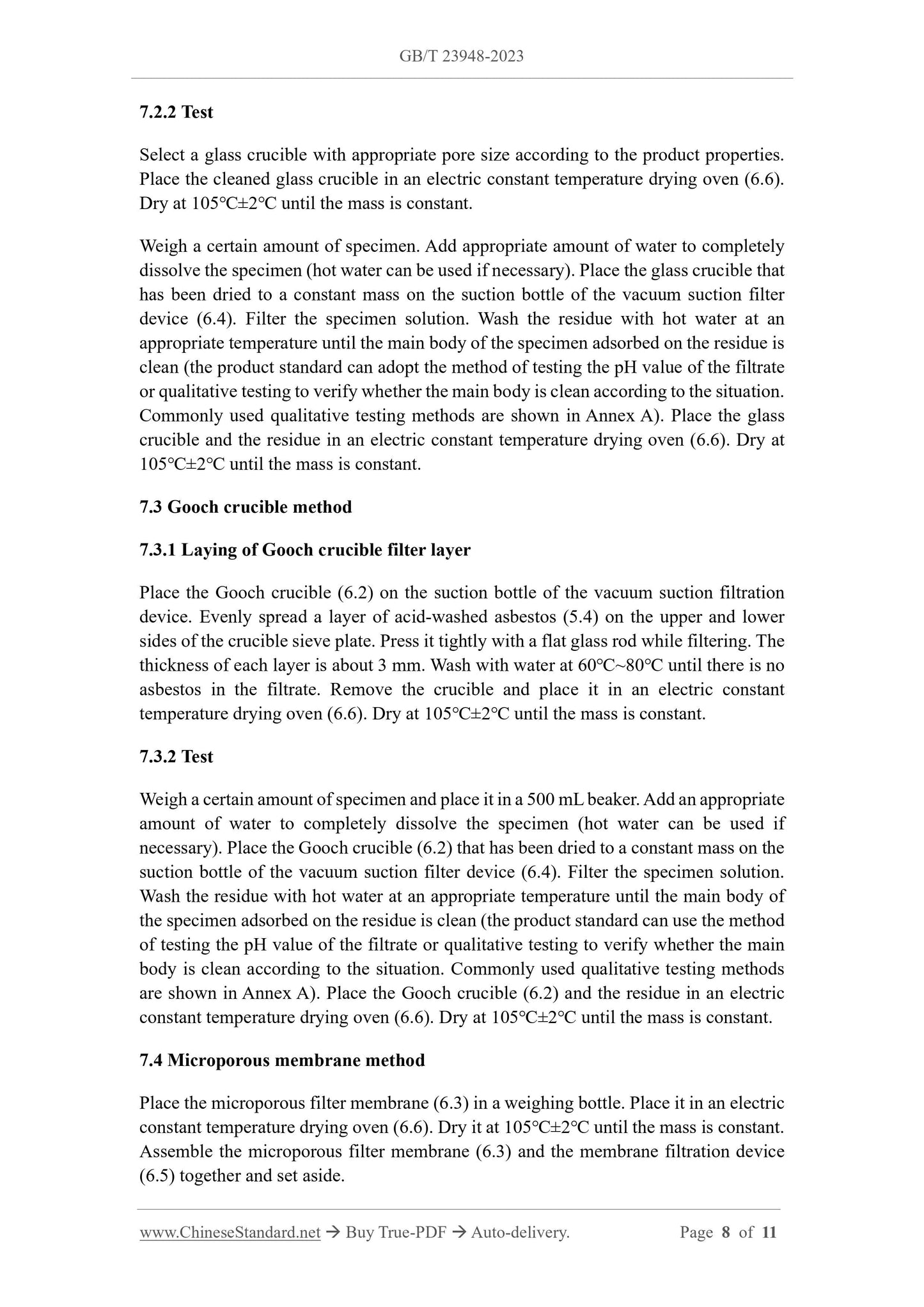1
/
of
7
www.ChineseStandard.us -- Field Test Asia Pte. Ltd.
GB/T 23948-2023 English PDF (GB/T23948-2023)
GB/T 23948-2023 English PDF (GB/T23948-2023)
Regular price
$170.00
Regular price
Sale price
$170.00
Unit price
/
per
Shipping calculated at checkout.
Couldn't load pickup availability
GB/T 23948-2023: Inorganic chemicals for industrial use - General method for the determination of water insoluble matter
Delivery: 9 seconds. Download (and Email) true-PDF + Invoice.Get Quotation: Click GB/T 23948-2023 (Self-service in 1-minute)
Newer / historical versions: GB/T 23948-2023
Preview True-PDF
Scope
This document describes the principles, reagents or materials, instruments andequipment, test procedures and test data processing of the general method for the
determination of water-insoluble matter in inorganic chemical products.
This document is applicable to the determination of water-insoluble matter in inorganic
chemical products. The glass sand crucible method specified in this document is
applicable to the determination of water-insoluble matter in non-alkaline products. The
microporous membrane filter method (made of polytetrafluoroethylene) is applicable
to the determination of water-insoluble matter in products with a pH value of 2~13 in
aqueous solution. The Gooch crucible method is applicable to the determination of
water-insoluble matter in all products.
Basic Data
| Standard ID | GB/T 23948-2023 (GB/T23948-2023) |
| Description (Translated English) | Inorganic chemicals for industrial use - General method for the determination of water insoluble matter |
| Sector / Industry | National Standard (Recommended) |
| Classification of Chinese Standard | G10 |
| Classification of International Standard | 71.060.01 |
| Word Count Estimation | 9,938 |
| Date of Issue | 2023-11-27 |
| Date of Implementation | 2024-06-01 |
| Older Standard (superseded by this standard) | GB/T 23948-2009 |
| Issuing agency(ies) | State Administration for Market Regulation, China National Standardization Administration |
Share
